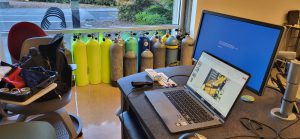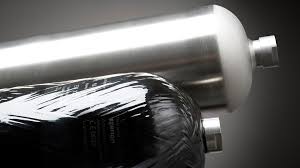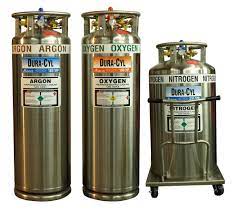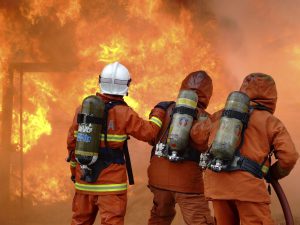
Cylinder Inspection Training: Why a Maintained Cylinder Is a Happy Cylinder
Uncover the importance of gas cylinder inspections and training. Dive deep into ensuring safety, boosting efficiency, and prolonging cylinder life.
Part 2 of 2:
Lessening damage caused by a cylinder rupture
Author: Don Kinney – Cylinder Training Services
Editor: Tony Pietrantonio
In the first part of this series we talked about determining the explosive force of a rupturing cylinder. It was discussed that there are number of factors and it is difficult to determine an exact number or equivalent force. To keep things simple, we used the equivalent of two hand grenades for a cylinder approximately 80 cu/ft (11litres) and 3000 psi (207 bar). Now we want to discuss the damage caused by a rupturing cylinder. Many people assume that they are protected by such force with the use of a makeshift containment or poorly engineered diversion unit.
The safest way to fill a cylinder is with the use of a commercially manufactured containment unit. A containment unit is normally engineered and built with welded steel. It undergoes third party testing to ensure the design will withstand a cylinder rupture. If a cylinder were to rupture within the containment unit, it is designed to contain any shrapnel and protect against the force of the explosion. The only business concerns with a commercial containment system is the cost and size. These systems can cost well into the tens of thousands of dollars. The more cylinders you wish to fill at one time, the larger the unit and the price goes up. Space and budget are generally the limitations to using this form of protection.
The next best safety device is a diversion unit. A diversion unit is designed to direct the explosive force of a rupture. It will not contain any shrapnel, it is only designed to direct the blast away from sensitive areas. A diversion unit can be as simple as a properly reinforced wall. The FST stands behind the barrier during the filling process for their safety. The FST might feel the force or change in environmental pressure, but they should be relatively safe from further harm or damaging shrapnel.
A diversion unit needs to be engineered correctly and placed in an area where the force of a rupture will not be directed to the wrong areas. Undesirable areas may be structural walls to the building, windows or populated areas. The diversion unit must be built to redirect the blast without damaging the diversion structure. A good example would be 6”- 12” reinforced concrete properly secured to the ground. The force of the explosion should be directed to an open space, so the blast can dissipate. To build a diversion, it is recommended that an engineer be consulted. Many times, people have assumed their design would work, when it did not.
Some examples of poorly designed diversion units may include cinder blocks, tubs or drywall. Hollow cinder blocks can be easily pulverized by the force of a rupturing cylinder. The cinder block debris then becomes shrapnel and can cause further damage or harm. The same situation occurs with metal or plastic tubs. They likely are not designed to withstand the force of a rupturing cylinder. Most are simply designed to hold water. If a cylinder ruptures in such a container, which contains water, those water molecules become a source of shrapnel along with the material used to build the container. As we teach in the CTS inspection class, water is difficult to compress and can increase damage If it is involved with the rupture.
The worst diversion unit I saw involved drywall. The facility (no longer in business) built a diversion unit using 2X4’s and drywall. They instructed their employees to stand behind the drywall for protection from a potential rupture.
The final option available to facilities would be to fill cylinders in as open a space as possible. The larger the area, the more the blast will dissipate before it can destroy objects that become shrapnel. This is likely the most common solution for facilities. It does not cost an excessive amount of money, just proper planning. The larger the area, the safer the situation. A properly inspected cylinder, filled in an open area, should provide a relatively safe situation for many facilities unable to purchase containment systems or build diversion units.
When filling a cylinder there is a rare chance of rupture. Even though it’s a rare occurrence nobody wants to be the recipient of that type of surprise. Since there are no guarantees of absolute safety it is best to hedge your bets by following as many safety steps as possible. The cheapest form of protection is proper training for the FST and a proper inspection by a trained inspector. When dealing with a high-pressure cylinder you want to do everything possible to maintain the cylinders integrity and to protect yourself during the filling process. A cylinder which has been properly inspected and shows no signs of cracks or severe corrosion has a limited chance of rupturing. However, when does a fill station technician (FST) know that the cylinder has been properly inspected?
The first safety step is to ensure that the cylinder being filled is within its hydrostatic testing period. At least the FST knows that the cylinder underwent some type of testing within a specified period. Another step would be to ask if the cylinder has gone through any other formalized inspection process within the hydrostatic requalification. The more often a cylinder is inspected the more likely any issues will be located. After thoroughly questioning an owner of a cylinder it is up to the FST to decide whether to fill a cylinder. A FST should be confident to set aside any cylinder and not fill it until a more qualified person inspects that cylinder or sends it out for further testing.
Properly inspecting a cylinder, ensuring proper markings and filling in an environment as safe as possible will be the best hedge against explosive force. There is no way to guarantee nothing will happen. The best safety protocols is to ensure nothing is taken for granted and the FST has done everything possible to check the safety of the cylinder before the filling process.

I enjoy continuing to build the business based on safety since 1999. CTS focuses on the inspection of high pressure cylinders, the maintaining of the valves and basic maintenance of high pressure compressor systems. CTS stays current in techniques and tools to train both the new and novice employee. We publish articles, update training tools and have created an APP to assist during the inspection process.
#cylinder #safety #hazmat #training #cylinderinspectiontraining #cylindex

Uncover the importance of gas cylinder inspections and training. Dive deep into ensuring safety, boosting efficiency, and prolonging cylinder life.

Is your composite cylinder showing signs of wear? Discover when to seek a professional repair service in our comprehensive guide.

29 CFR 1910.101 intro Handling cryogenic cylinders involves working with extremely low-temperature gases that pose unique safety risks. To ensure the safe handling, storage, and transportation of these hazardous materials,

Introduction Firefighters encounter many risks while on duty, including hazardous materials and high pressure bottles. High pressure bottles are used for a variety of purposes in firefighting, including powering hydraulic